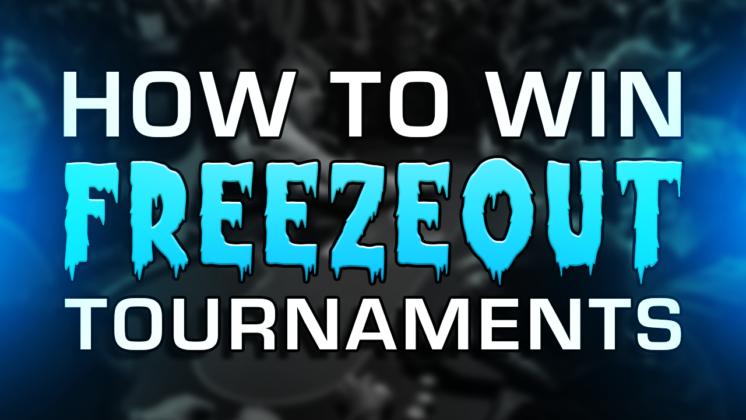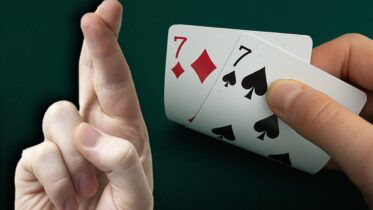Both live and online poker operators these days offer dozens of different tournament formats like PKOs or re-buy, each offering a slightly different approach to the game. Back in the day, however, freezeout poker tournaments used to be the most popular, while rebuy tournaments were basically the only alternative.
In the simplest of terms, freezeout poker tournaments are the ones in which each player is only allowed to play once, with no additional chips available for purchase at any later point.
While classic freezeout tournament poker is slowly dying off at the expense of re-entry tournaments, some major events like the Main Event at the WSOP are still played in the freezeout format.
So, if you are going to try your luck at tournament poker, you better learn all there is about freezeout tournaments and the basic adjustments in your game you should make for them.
What Makes a Freezeout Poker Tournament?
As previously mentioned, freezeout poker tournaments are the ones in which no rebuys or re-entries are allowed, meaning one player gets to play only one time.
The best example of a classic freezeout poker tournament is the WSOP Main Event, in which you can only buy one stack of chips across the four starting days. If you lose your chips, you are out for good!
Poker rooms and online poker operators these days have started to introduce the re-entry option to more and more freezeout poker tournaments in order to make the prize pools bigger and more appealing to the players, but the freezeout format remains quite attractive as well.
For many professionals, freezeout poker tournaments mean that they get to exert more pressure on other players, as the risk of busting out and going home actually exists.
This is exactly why many players consider freezeout poker the only pure form of the game, as it puts everyone to difficult decisions that can mean the end of the tournament early on.
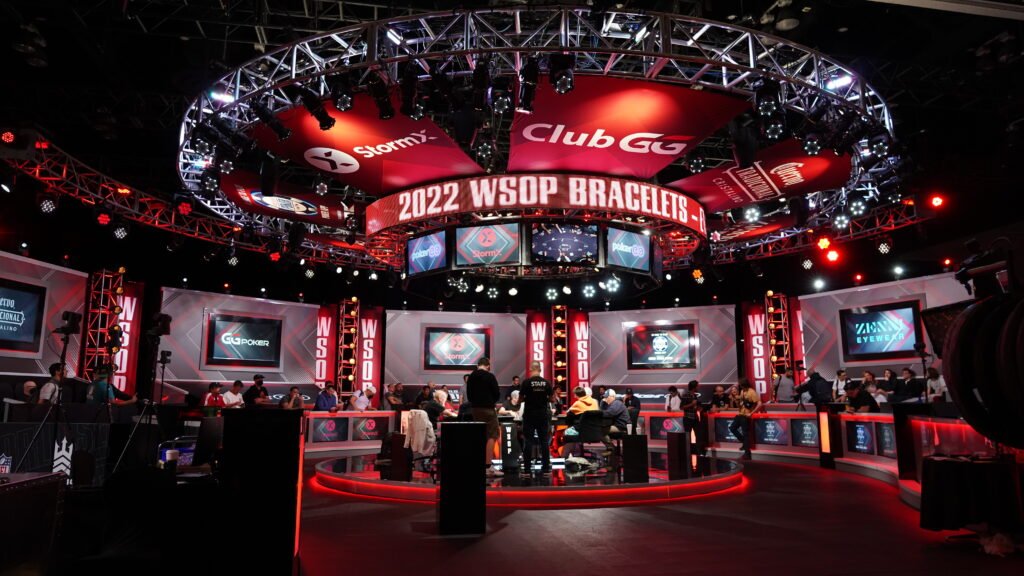
The WSOP Main Event is the largest freezeout tournament that occurs every year.
How Freezeout Differs from Other Formats
So what exactly are the big differences between freezeout poker tournaments and other formats such as re-entry and rebuy?
There are a number of differences to consider, including:
- Smaller player and prize pools
- Shorter duration
- Competitive atmosphere
- No second chances
Let’s talk briefly about each of these main talking points.
Smaller Player and Prize Pools
Perhaps the most obvious thing about freezeout poker tournaments compared to rebuys and re-entries is the fact that the overall number of entries in freezeouts tends to be smaller.
Since each player can only pay the buy-in once and get one chip stack, it is only natural for the overall number of entries in freezeouts to remain somewhat limited.
That said, the number of players in a freezeout will reflect the exact number of individuals who showed up for the event, and this number will paint a clear picture of the turnout for the event.
While freezeouts may be harder to organize if you want a massive prize pool, the best poker rooms out there manage to get plenty of individual players out and still create a big event even without re-entries.
Shorter Duration
No re-entries or rebuys means that everyone gets to play just once, and this means the overall time it takes to finish the tournament is reduced.
Since the late registration period in a freezeout poker tournament is only there to allow players who were late to the event to join, it does not significantly impact the overall duration.
Freezeout poker tournaments do tend to have slightly smaller prize pools, but they also last a shorter amount of time, making them ideal for players who prefer faster events and a quicker path to the final table.
Competitive Atmosphere
The notion of freezeout poker being the only truly pure format of the game exists with many players, and it is not without a good reason.
The format entices players to take care of their chips and make decisions that are actually in their best interest instead of mindlessly gambling while trying to build up a stack.
While re-entry tournaments tend to see players put their chips in with any draw or weak hand in the hopes of chipping up or re-entering, freezeouts make every chip very valuable.
If you want to play poker in its purest form and ensure that the field is not made up of almost entirely gamblers for hours at a time, playing freezeout poker is the best way to go.
No Second Chances
Once you bust out of a freezeout poker tournament, all that’s left is to pick up your things and go home or perhaps enter a completely different game.
With no chance to get back into the mix, players will think twice before making a super loose call before the flop or staking it all on just a flush draw. This is exactly what makes playing freezeout poker tournaments so fun and exciting, as every decision you make could be your last.
If you enjoy playing poker with everything on the line in every hand, and you thrive under pressure, then freezeout poker tournaments are ideal for you.
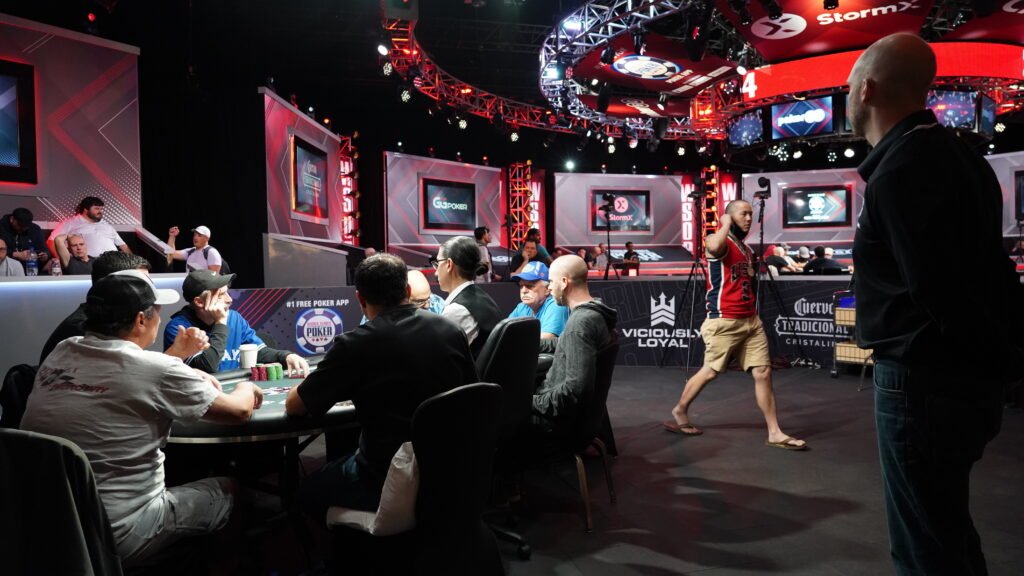
Once you are eliminated from a freezeout tournament, you are out for good.
How to Adjust to Freezeout Poker Tournaments
These days, many tournaments offer some sort of a re-entry option, and most players learn how to play in an atmosphere where re-entries are the norm. However, learning to play freezeout poker tournaments is great not only for when you actually play in them but also for when you play in re-entry events.
The one thing many players get wrong about re-entries is that they think chips don’t matter early on, and gambling is fine in an attempt to get a big chip stack.
In fact, by playing too wild early on in re-entries, most players drop so much value that it would be almost impossible for them to be profitable in these games in the long run.
But, for the time being, we are talking about freezeout poker tournaments, so let’s take a look at a few major tournament strategy adjustments you should make when playing in such tournaments.
Start Slowly
Freezeout poker tournaments have a tendency to have a slow structure as well, giving you plenty of play in the early levels. The last thing you want to do is drop your chips in a silly spot early in the freezeout poker tournaments, which is why you should be playing tight at the beginning.
By playing a fairly tight and aggressive style of poker early on, you will be able to slowly grow your stack, hopefully without ever risking your entire stack until the later levels.
You want to make small raises and bets, keep the stack-to-pot ratio as big as possible, and allow for a few bad beats along the way.
Fold When You Are Beat
Perhaps the biggest mistake many poker players make in freezeout poker tournaments is that they make the call even when they know they are beaten. Getting sucked out on the turn or river can definitely be annoying, but sometimes there is simply nothing you can do about it.
The nature of tournament poker is such that you will run into bad beats and coolers, and if you bust out every time you do, you will not get very far at all.
Instead, try to think about things in a systematic way and find that correct fold when you see you are clearly beaten. Learn to fight in another hand and take the better spot when it appears.
Exert Pressure When Possible
While playing tight early on in a freezeout tournament is the way to go, there is also a time to start loosening up and exerting some pressure. As the tournament moves into the later levels and you build up your stack, you will notice other players get a bit more desperate.
This is the time to use the chips you have accumulated and put pressure on those players who are getting close to the danger zone.
Remember that no one wants to lose their last chips in a freezeout poker tournament and exert maximum pressure when the time is right to get the maximum amount of EV from every situation.
Create Player Profiles
Unlike re-entries and rebuys, where things get hectic, and players come and go all the time, you may be stuck with the same group of players in a freezeout tournament for quite a while.
This is why you want to pay even more attention to the particular players you are playing against and build some player profiles as you go along.
Which guy at your table bluffs every hand? Who only plays to the river when they have the goods? These are all very important things to keep note of.
By creating a mental profile of every player at your table, you will be able to make decisions that you could not have made otherwise.
Keep ICM in Mind
ICM is a concept that many tournament players don’t fully understand, but one that can make you heaps of money in the long run.
Player fields in freezeout poker tournaments are smaller, so you will find yourself hovering around the final table more often than you would in re-entries.
For that reason, you will need to understand the importance of ICM implications in late-game and the ways you can make more of your decisions in this stage of the tournament.
Make sure to practice ICM with one of the many useful simulation tools during your study sessions, and you will see your results drastically improve.
Big Adjustments on Final Tables
Final tables of freezeout poker tournaments can get quite interesting, as they often end up having more recreational players on them than re-entry or rebuy events.
Without the ability to enter the event many times, which the pros take full advantage of, you are more likely to see the pros fall off and recreational players make it to the final table.
Of course, there will usually be a few serious poker players in the final stretch as well, so it’s important to recognize who those players are, assess everyone’s stack and position, and adjust accordingly.
Typically speaking, you will be able to abuse recreational players with middling stacks on final tables quite a bit, as they will not want to bust out unless they have a very strong hand.
On the other hand, other pros will be looking to do the same, which means you can exploit them by getting in the mix when they try to abuse the recs and play right back at them.
For example, imagine you see a recreational player min-raise in the middle position, only for the best player at the table to 3-bet them from the button. You can already see the rec twitching in their seat and getting ready to fold. Now is the time to pounce with a 4-bet, eliminate the rec from the pot, and put the pro in a very tough spot, as they are likely not to have a big hand at all.
It’s plays like this that will give you an ultimate edge in freezeout tournaments and put you in pole position to win the whole thing.
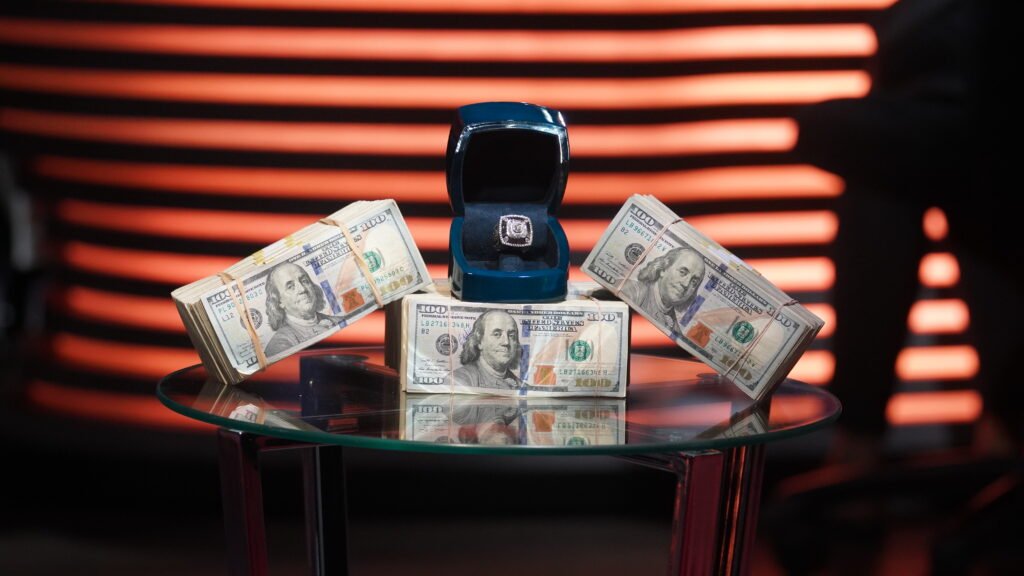
With the right adjustments, you can win trophies and big cash prizes in freezeout tournaments.
Master the Art of Freezeout Poker
Freezeout poker tournaments are unlike any other form of poker, as this is the only format in which you only get one shot, and you are done.
Busting out of a freezeout tournament means having to go home or play another event, but only after the inevitable walks of shame.
This is perhaps the reason the WSOP Main Event is decided over freezeout poker tournament tables, as the format puts the pros and the recs into the same position and means every mistake could be the end of your ride.
If you enjoy the concept more than endless re-entries, then practice the skills needed to thrive in a freezeout environment and play as many freezeouts as you can.
Just keep in mind that there are fewer and fewer freezeout events out there by the day, and if you want to play poker regularly, you may end up having to play at least some re-entry events as well.
